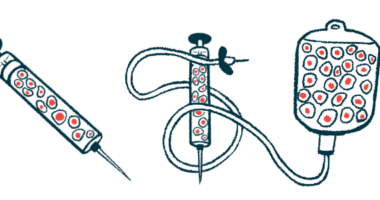Complex Surgical Management of Skin Tumors Noted in Study

Skin tumors called cutaneous squamous cell carcinomas (cSCCs) are common in people with certain types of epidermolysis bullosa (EB), and their surgical management is often complex, a study highlights.
Its researchers noted that regular monitoring to enable early diagnosis is key to proper management of these tumors.
“Our data suggest that an annual skin check-up should be performed from the age of 20 and should be shortened at least to every 6 months in case of previous cSCCs,” they wrote.
The study, “Surgical management and oncological follow-up of cutaneous squamous cell carcinomas arising in epidermolysis bullosa patients,” was published in the International Journal of Dermatology.
Scientists at Modena University Hospital in Italy reported data for five people with EB who underwent treatment for cSCCs at their clinic. Among the patients, two had junctional EB and three had dystrophic EB. The researchers noted there were no noteworthy differences between the two types in terms of cancer-related clinical outcomes.
The patients were first diagnosed with a cSCC from ages 27.5 to 40.4 years (mean age 34.74 years). This is fairly young compared with skin cancers in people without EB, and also as a result of lifelong sun exposure. The researchers noted cSCC probably is more likely to develop at a young age in EB patients due to increased inflammation in their skin.
In total, 26 cSCC tumors were detected in the five patients; all were located on the limbs or extremities.
The gold standard of treatment for these skin tumors is surgically removing the tumor. Ideally, this completely removes it with minimal impact on healthy tissue. However, in EB, identifying exactly where a tumor stops and starts can be difficult for clinicians.
“Tumor margin identification is very difficult in a setting of chronic wounds and scars, such as in EB-affected skin,” the researchers wrote.
All of the cSCCs identified were treated surgically. In total, 41 procedures were performed on the 26 tumors. Slightly more than half (57.7%) of the cSCCs could be removed in one operation, but others required up to four separate procedures to fully remove the tumor.
The difficulty in clearly identifying tumor edges in EB-affected skin likely contributed to the high rate of tumors needing multiple surgeries, the researchers noted.
Three patients experienced a recurrence, where the tumor grew back despite being completely removed. Recurrences accounted for 10 of the tumors in this study; some of the tumors recurred more than once.
Healing after surgery also can be complicated for EB patients. In 10 surgeries, wounds were healed by second intention, when healing occurs naturally rather than the wound being stitched. In the remaining 31 surgeries, a skin substitute (e.g., MatriDerm) was used to facilitate healing.
“Healing by secondary intention is not only always achievable in larger wounds but also carries the risk of developing scars and adhesions that can worsen the patient quality of life. … Nowadays, the use of dermal substitutes is the preferred wound closure strategy to quicken the healing process and reduce scar tissue formation,” the researchers wrote.
“From our experience, the best approach for [skin cancers] in EB patients is still based on early diagnosis and removal and regular follow-up after surgery,” they concluded.







